Discover the excavations and the very place where Peter was buried
Milan: The Basilica of St. Ambrose
One of the oldest churches in Milan, so relevant in its art and history
The Basilica of St. Ambrose is one of the oldest churches in Milan.
It is a beautiful place! The colonnade is reminiscent of the portico in Jerusalem and it was used for markets and trading.
We enter the church by walking down 3 steps and we visit the inside and the crypt, learning something more about the history of St. Ambrose, who came to Milan as prefect and he was elected Bishop by popular acclamation without any personal intent.
⇒ Watch the full web serie Milan & Leonardo da Vinci
Visit St. Ambrose official website
Visit Turismo Milano official website
Video full text: The Basilica of St. Ambrose
The only way to reach St. Ambrose’s is by walking down some steps,
because naturally we have to descend down to Roman times,
and go below the existing level of the city!
It’s the first time I have seen St. Ambrose’s,
it’s beautiful, with this magnificent sky.
The colonnade is reminiscent of the portico in Jerusalem,
that served the same purpose; it was used for markets and trading.
In fact, there is also a metric yardstick down in one of the columns,
which is a bit taller than a metre, it actually measures a metre and half,
and it was used for measuring fabrics. This was a veritable traders’ market.
History tells us that many of these columns were adapted.
This one was probably the column from a pagan building,
that was reinstalled, but upside down! You can tell that from the inscription.
Even the door’s wooden jamb is incredibly old and has been adapted.
This was a time during which Christianity asserted itself and became very important.
Above all with St. Ambrose.
There’s an inscription here in Latin and one in Greek.
The Ambrosian Mass is a combination of Eastern and Western rite.
There was the division between the East and the West, but they were both part the Roman Empire,
and therefore it still reflects an Eastern rite.
We enter the church by walking down another 3 steps.
This is the homily, the sermon of St. Ambrose.
Jesus is in the centre delivering a blessing.
These are the disciples, they are all of us in some way.
We’re all walking a path, feet are important, then there’s the journey and the travelling.So if we step on each other’s toes, as was the case with His disciples,
we have, in some way, to put up with one another.
Christianity, therefore, means having a positive relationship with one’s neighbour,
even by tolerating and accepting others.
Basically this is a very Milanese attitude, being hospitable,
as though having their cör in man (Milanese dialect for ‘wearing their heart on their sleeve’) means tolerating and sustaining.
It’s a nativity that’s ahead of its time.
Jesus appears as a child wrapped in swaddling clothes,
but also wrapped in a death shroud and laid in the tomb,
alongside are the ox and the donkey.
The first depiction of a nativity scene
that communicates very powerfully the meaning of Christianity, i.e. Jesus who was born, died and resurrected.
Climbing up to this part of the altar is important and very strange.
The floor was made by the architect Caccia Dominioni,
who wanted to provide a sense of precariousness that is very close to the idea of prayer.
The precariousness of the feet that walk this world where, when all is said and done, we are only passing through.
We’re here, but how long for?
St. Ambrose came to Milan as prefect.
He was German and he was elected Bishop of Milan in the year 374 by popular acclamation,
without having been baptised; that was to happen later.
He was also, in some ways, a politician and he excommunicated the Emperor.
St. Ambrose is, in fact, not holding a flower in his hand but a whip.
It would seem that Ambrose, who called himself Aurelius of the Aureli family,
really did not want to be appointed a Bishop.
He did everything he could to try and sully his reputation.
He would sentence people to be tortured and he welcomed prostitutes into his home.
He even attempted to flee, as can be seen in the panels.
But he was elected by force and he himself said:
“What resistance did I not make when I was raised to the Archbishopric!
But the violence done to me prevailed”
Once ordained Bishop his conduct was exemplary,
he gave a lot of his things away to the poor,
and didn’t hesitate to break open the sacred vessels to make charitable donations.
This is the episcopal throne, St. Ambrose’s chair.
This is where today’s bishops come and sit once they have been elected,
to take up their mandate from the diocese.
This is the crypt where St. Ambrose rests.
Following his death by natural causes,
he was buried, as was his wish, alongside Gervasius and Protasius,
two decapitated martyrs, two soldiers in the service of the Emperor.
They were martyred because they no longer acknowledged the Emperor’s power,
as being above that of God.
They were beheaded and they are here as soldiers to protect St. Ambrose.
Visit Milan: helpful hints
Italian name: Milano
Arrival
Milan has got three airports:
- Malpensa Airport is the largest international & intecontinental Airport in Northern Italy. 30 miles Northwest from the city centre. Connections:
→ Train Malpensa Express: trains leaves every 30 minutes in each direction, connecting the Airport to Milan Grand Central Station or Cadorna Railway Station. Terminals 1 and 2. It takes 45 min, price: 14 €
→ Shuttle Bus: Malpensa Shuttle and Malpensa Bus Express connect the airport to Milan Grand Central Railway Station and Milan’s Underground Network. Terminals 1 and 2. It takes 60/70 min, price: 8 € - City Airport Linate is an international airport connecting Milan with main European cities, located just 4 miles from the city centre. Connections by shuttle: Atm Bus n. 73 from Milano Duomo M1 – M3 (Piazza Diaz, direction: San Babila), first ride at 5.35 am, last one at 00.35. Frequency: every 10 min, price 1,5 €
- Milan Bergamo Airport Orio al Serio is mainly low cost flights Airport, located 30 miles Northwest from Milan. Connections only by Shuttle: There are 4 different bus companies, pricing changes from 5 up to 8 €
Transports
ATM is Milan public transport service both for bus, tram and subway. Single ticket costs 1.50€ for 90-min ride. Consider daily/weekly subscriptions. You can buy tickets also texting to 48444. Milan Subway is the longest in Italy, covering 95 km: Donwload and check the map.
Moving in town can be nice also by bike: Milan has got a powerfull bike sharing service providing both regular and e-bikes. Here is the experience of our Ambassador Kim Harding with BikeMi service and a useful video of our Ambassador Roxana explaining how does it work. Car Sharing is also good with many different companies to choose.
Try also the local urban railway train, called Passante Ferroviario, check the experience of our Ambassador Roxana Iacoban travelling by local train in town.
What to do in Milan
Milan is the Italian financial center and one of the European capitals of Fashion. Known for its nightlife as well.
Some tips on Italia Slow Tour: watch our web serie about Leonardo da Vinci’s places, climb on top of the Duomo, visit Prada Foundation, Museums and Art Galleries, taste some fine gelato and try the local Aperitivo and – not joking – enjoy a sailing trip (!!) or some time deep in the nature close to some actual farms and fields.
Where to sleep
Accomodations are quite expensive in Milan, fares rise up and hotels get full according to the rich event calendar of the city (see: Fashion Week, Salone del mobile, Big concerts, Theatre and Sport events, etc.). If you are not specifically interested in any of those, try to travel during other periods to save some money.
Italia Slow Tour recommends:
- Hotel Cervo in Garibaldi District if you want to stay close to city centre and enjoy the nightlife
- Hotel Concorde located on the Green Way Milan-Lecco to Lake Como, if you want to move around adn travel by bike
Shopping in Milan
The famous Fashion District involves the following streets/areas: Via Montenapoleone, via Manzoni, via della Spiga and Corso Venezia. The so called “Quadrilateral of Fashion”. Here you can find all kind of brands and shops. Easy to reach by Subway (stop at Montenapoleone station).
Don’t miss the Street Markets! Almost every day you can find one: best are the ones in Viale Papiniano (on Tuesday) and Via Fauchè (on Saturday). More on the official website of weekly street markets. If you are into sustainable local products, Milan has got 8 actual farms in town and a green Earth Market.
If you are interested in Outlet Shopping, in the outskirt of Milan you can find 4 different Fashion Outlets, in a radius of 62 miles. Here you can find everyday a lot of famous high quality Italian brands on sale, with prices cut off up to 50%. All the outlets are connected to the center of Milan by Shuttle Bus:
- Serravalle Designer Outlet – Shuttle departure from Milan Central Station or Cairoli square
- Fidenza Village Outlet Shopping – Shuttle departure from Piazza della Repubblica 5, at the corner with Turati st.
- Vicolungo The Style Outlets – Shuttle departure from Cairoli square
- Rodengo-Saiano Franciacorta Outlet Village – Shuttle departure from Cairoli square

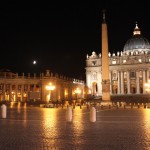
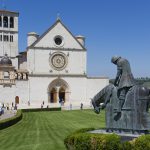

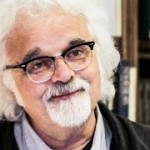
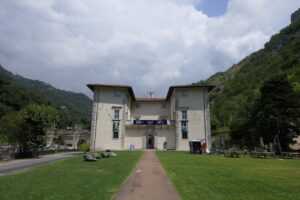
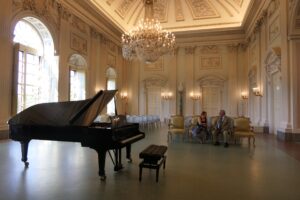

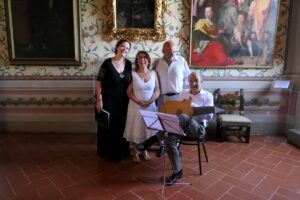
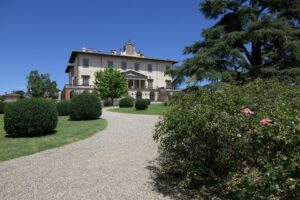
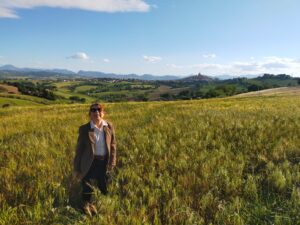
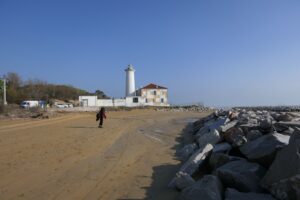
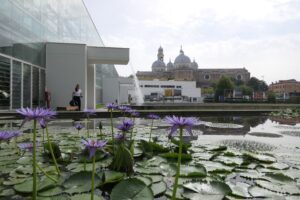


1 Comment
Il mio Slow Tour a Milano | Nomadizziamoci
[…] La Basilica di Sant’Ambrogio, storia della chiesa e di Sant’Ambrogio […]